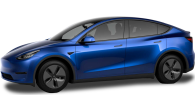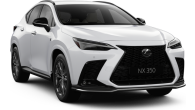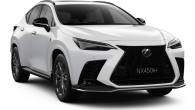When the GLB arrived in Australia in 2020 it did so to much fanfare as the little premium SUV which could do it all.
It had seven-seats, ideal dimensions slotting underneath the mid-size GLC, the option of all-wheel drive, and even a go-fast AMG version to boot.
Now, the clever little luxury SUV can add another headline feature - it’s gone fully electric.
The EQB, like the EQA before it, follows the formula of its donor car to a T, being familiar for an existing Mercedes buyer whilst also making the jump to a fully electric drivetrain.
For now it comes in two variants, a two-wheel drive with seven seats, and a five-seat all-wheel drive which leans more on the performance aspect of its electric drivetrain. Is the trade-off worth it?
The answer is: It depends. Read on to find out why.
Mercedes-Benz EQB 2023: 350 4Matic
| Engine Type | 0.0L |
|---|---|
| Fuel Type | Electric |
| Fuel Efficiency | 0.0L/100km (combined) |
| Seating | 5 |
| Price From | $84,810 - $97,460 |
Price and features - Does it represent good value for the price? What features does it come with?
The EQB range kicks off from $87,800, before on-road costs, for the base 250, but the car we’re looking at for this review is the top-spec 350 4Matic, which wears a price-tag of $106,700.
There’s no doubt it’s a hefty price, even for an EV, and especially for a sort-of ‘small’ SUV. There’s more to consider, too. As I mentioned in the intro, the all-wheel drive system precludes the seven-seat layout in this top-spec car, and it has less range than the front-wheel drive model, too, dropping from 371km to 360km.
On the upswing, the dual-motor powertrain is far preferable to the so-so front-wheel drive option, and the 350 also gains an AMG-spiced bodykit and flat-bottomed steering wheel, as well as a panoramic sunroof.
Outside of the extra flair, the EQB 350 is almost as well equipped as you could hope, with the flashy dual-10.25-inch 'MBUX' screen set-up, Nappa leather steering wheel and interior appointments with Mercedes’ signature 'Artico' synthetic seat trim, LED headlights, ambient interior lighting with fully customisable RGB controls, dual-zone climate, a wireless phone charger, 20-inch alloy wheels, as well as keyless entry and push-start ignition.
Given the EQB’s dimensions it would seem its most direct rival is the Tesla Model Y, although it may not be a favourable comparison.
At over $100,000 the EQB 350 is still more expensive than the top-spec Model Y Performance, which is even more powerful than our Merc here.
Other more indirect rivals include the Volvo XC40 Recharge (from $74,490 in twin-motor form), or less performance-oriented Lexus UX300e ($80,691 for the top-spec Sports Luxury), although neither are as large as the EQB, and the Lexus has about half the performance.
Design - Is there anything interesting about its design?
The EQB has a very predictable design in that it doesn't stray from the combustion car’s formula. At all.
The only evidence from the outside this is the electric version is the blanked out grille, and closer observers might notice the rear light bar which cuts across the boot lid is different from the split tail-light design which appears on the combustion car.
Still, to my eyes, the GLB is a cool design with its upright boxy look bucking the curvaceous trend of most EVs, and, indeed, the rest of the Mercedes line-up.
Its rebellious streak makes it one of the most appealing SUVs in Mercedes’ current range, and it comes with a bit of toughness which is missing from the EQA.
.jpg)
If nothing else, it’s a completely different look from Tesla’s amorphous Model Y, and this may be enough to appeal to some.
Inside is identical to other Mercedes models which sit on the MFA2 small car platform, immediately setting itself apart with the big high-resolution screens, glitzy ambient lighting, as well as an abundance of chrome and gloss black.
It’s designed to impress from the first time you hop in, and there’s no doubt it does, but it may be a bit over-the-top for some, particularly fans of the more conservative Mercedes designs of eras past.
The chrome in particular becomes a bit of a problem, as it has an annoying habit of catching the reflection of the sun and sending it directly into the driver’s eyes.
.jpg)
It all feels as plush as a circa-$100,000 luxury car should though, with the ‘Artico’ seat trim being one of the better synthetic options on the market, and soft-touch surfaces throughout the cabin selling the Mercedes promise.
The GLB toughness is even reflected in the chiselled out finishes in the door, dash, and centre console, helping to set it apart from the tamer EQA.
The software is also fast, high resolution, and well presented, which bodes well given the amount of screen real-estate, and the amount of customization is impressive, too.
Again, there are many who will prefer its look and feel to the Apple-store chic of the Tesla Model Y, or the pared back Scandinavian approach of the XC40 Recharge, but also those who won’t. Like many new Mercedes products, it continues to polarise buyers.
Practicality - How practical is the space inside?
This should be the GLB’s calling card. It’s a car with an ideal footprint, not as wide or as long as most mid-size SUVs, whilst also offering a larger cabin and boot.
The big drawback for this variant in particular is the lack of a seven-seat option, as the all-wheel drive requires the under-floor space which is required to give rear occupants legroom.
It’s a shame, too, because I found the two rear seats in this car’s GLB combustion equivalent to be surprisingly accommodating for even adults.
As a result of these missing seats, though, the full volume can be exploited in the boot, which comes in at a whopping 495 litres.
It’s rivalled by the Model Y, which also has a cavernous boot, although it has a much larger storage area than the Volvo XC40.
As an added bonus, there is a decent under-floor storage area which has enough space for all your charging cables, although there is no so-called ‘frunk’ with what is normally the engine bay taken up by cooling and auxiliary hardware.
.jpg)
At first glance there’s so much going on under there, you’d be forgiven for thinking the EQB has an actual engine!
The cabin is also enormous as well as configurable. The EQB has massive rear doors (as it’s designed to be a seven-seater) to make it easy to get in and out of, and once you’re settled in, the amount of space for me (at 182cm) behind my own driving position is very impressive, with ample leg, arm, and headroom.
Rear passengers score the same nice synthetic leather seat and door trim as the front passengers, a bottle holder in each door, as well as two in a flip-out caddy on the drop-down armrest, two nets on the backs of the front seats, dual adjustable air vents, and power outlets on the back of the console. There is also a separate section of the split sunroof to benefit those in the back seat.
.jpg)
Up front the cabin is equally flexible, although it immediately seems odd that the front seats are manually adjustable. Almost unforgivable in a $100,000 car.
At least the trim is comfortable, and again, the space is configurable for people of all shapes and sizes.
Storage options include large bins in each door, a split-opening armrest console with USB-C outlets inside, a slide-open area underneath the climate unit, which houses a wireless phone charger and additional power outlets, as well as the usual glove box arrangement.
Soft trims continue into the doors, although one small annoyance is the excess of chrome trim which has the unfortunate habit of reflecting harsh Australian sun into your eyes if it hits at the wrong angle.
.jpg)
The software is nice and quick, but can be cumbersome and over-complicated to operate at times, particularly when using the centre touchpad, or adjusting the dash with the small touch elements on the wheel.
It is also notable the Apple CarPlay as-tested only took up a centre portion of the screen, and is not set-up for widescreen mode to take full advantage of the hardware.
Minor complaints aside, though, the EQB follows its combustion GLB twin in having by far one of the most flexible and configurable cabins in its class.
Drivetrain - What are the key stats for the drivetrain?
While the EQB 350 loses its valuable third-row seats, it gains a much more impressive drivetrain than the lesser EQB 250 variant.
While that car has a so-so front-motor set-up producing 140kW/385Nm, the top-spec 350 sports a much more capable 215kW/520Nm dual-motor system.
.jpg)
This allows a 0-100km/h sprint time of 6.2 seconds, and while it’s not as fast as the entry-level Tesla Model 3, it’s still impressive for a 2153kg SUV.
The all-wheel drive capability also adds a level of confidence which can’t be matched by a front-drive, more on this in the driving section of this review.
Energy consumption - How much does it consume? What’s the range like, and what it’s like to recharge/refuel?
Regardless of which version of the EQB is chosen, the SUV has a 66.5kWh lithium-ion battery pack, and in the case of our all-wheel drive 350, this grants it a 360km WLTP-rated driving range between charges.
My car was reporting around 350km of range at or near a full charge, while my week of testing produced a dash-reported consumption figure of just 18.2kWh/100km.
This is surprising for two reasons. Firstly, I subjected the EQB 350 to a significant amount of freeway testing during my time with it, which usually produces worse consumption numbers for EVs, but it actually bested its official 21.0kWh/100km official figure by a decent margin.
Secondly, I’m puzzled to find this car outperformed the smaller and lighter EQA 250 I had on test in 2021 in terms of overall consumption, and by a significant margin. Very odd.
When it comes to charging up, the EQB can be charged at a rate of 100kW on a fast DC charger, for a 10-80 per cent charge time in a claimed 30 minutes.
On the slower but cheaper-to-install AC standard, the EQB has an 11kW inverter, allowing a convenient ‘slow’ charge time of 4.1 hours. Expect between 25 and 30 hours on a standard wall socket.
Driving - What's it like to drive?
This is where the 350 version of the EQB shines. This car is a beast to drive with plenty of power available at your right foot, and incredible amounts of traction to match from its torque-vectored all-wheel drive system.
This lets it be rapid, but not scary, and despite its square and upright body, might surprise you when it comes to carving a few corners.
Like many EVs, the EQB’s weight feels low and centred, but it appears the suspension has been adjusted to remove any bouncy quality, which might come with the additional weight added over the combustion variants, with nearly 500kg of lithium batteries under the floor.
In fact, the ride is also one of the things which impressed me most about the EQB. It even has huge 20-inch AMG wheels, yet it dealt with bumps of all shapes and sizes in an impressive manner, keeping the body under control, and communicating remarkably little in terms of vibration or unpleasantness into the cabin.
The steering offes a nice balance of feel and electrical assistance, a trait which combines with the EQB’s convenient size to make for an easy SUV to park and manoeuvre.
.jpg)
When it comes to the EQB’s traits as an electric car, there are several modes available to alter the experience.
Using the paddle shifters, there are several regenerative braking settings to choose from. While none of them are a ‘single pedal’ mode, the D- mode is pretty strong, and clearly contributed to the EQB’s surprisingly good energy consumption in my time with the car.
Activating D+ mode, which can be combined with a sporty driving setting, tones down the regenerative setting almost completely and feels as though it unleashes more potential from the potent electric motors.
While the sportier settings made the 2WD EQA I tested last year feel a little twitchy and prone to wheelspin, the all-wheel drive system keeps this well under control in the larger EQB for impressive acceleration characteristics.
The breadth of this SUV’s ability is perhaps its most impressive attribute. It can feel comfortable and tame around town, with alarming speed and tenacity when attacking the open road should you so desire.
Sure, it’s not as whiplash-inducing as some of its rivals, particularly the Volvo XC40 Recharge or Tesla Model Y, but for a luxury SUV like this it’s more than what you could ask for.
Warranty & Safety Rating
Safety - What safety equipment is fitted? What safety rating?
The EQB scores a thorough suite of active safety equipment including freeway-speed auto emergency braking (7.0-200km/h), lane keep assist with lane departure warning, blind-spot monitoring with rear cross-traffic alert, as well as one of the best adaptive cruise systems on the market.
In the event of an impact, the EQB scores dual front, side, and head curtain airbags (the side and curtain bags cover both rows) as well as a driver’s knee airbag. There are the usual dual outboard ISOFIX child seat mounting points on the rear row, as well as three top-tether points.
The EQB scored a maximum five-star ANCAP safety rating to the current 2022 standards, but this rating only covers the base 250 variant. It scored highly across all criteria.
Ownership - What does it cost to own? What warranty is offered?
Mercedes offers a five year and unlimited kilometre warranty, with five years of roadside assist. The high-voltage battery components are also covered by a separate and industry-standard eight-year and 160,000km warranty.
Service intervals are once every 12 months or 25,000km and the service plan costs an average of $440 a year for the life of the warranty which is expensive for an EV, especially considering Polestar offers free servicing for the first five years, and Volvo’s electric offerings are around half the cost over the same period.
Verdict
I really liked the combustion version of this car, the GLB, for its funky style and flexibility and I was pleased to find how easily Mercedes has made the conversion to a fully-electric layout for the EQB.
Despite a tall price, the EQB 350 is a compelling option for those seeking something a bit more luxurious than the Tesla Model Y, something a bit larger than the Volvo XC40 Recharge, and something a bit smaller than the Audi e-tron or the EQC.
The main trade-off for this 350 variant is the loss of the seven-seat layout in favour of more performance. Instead it offers a huge boot, has a sufficient range for city-based buyers, and offers surprising levels of fun, too.
Just make sure you’ve considered its rivals which may potentially offer more range or features for the same money.
Pricing Guides

Range and Specs
| Vehicle | Specs | Price* |
|---|---|---|
| 250 | Electric, 1 SPEED AUTOMATIC | $74,690 - $85,910 |
| 250 Edition 1 | Electric, 1 SPEED AUTOMATIC | $90,200 - $103,730 |
| 250+ | Electric, 1 SPEED AUTOMATIC | $82,940 - $95,370 |



.jpg)

.jpg)
.jpg)
.jpg)
.jpg)
.jpg)
.jpg)
.jpg)
.jpg)
.jpg)
.jpg)
.jpg)
.jpg)
.jpg)
.jpg)
.jpg)












_0.jpg)
.jpg)
.jpg)
.jpg)

.jpg)

.jpg)
Comments